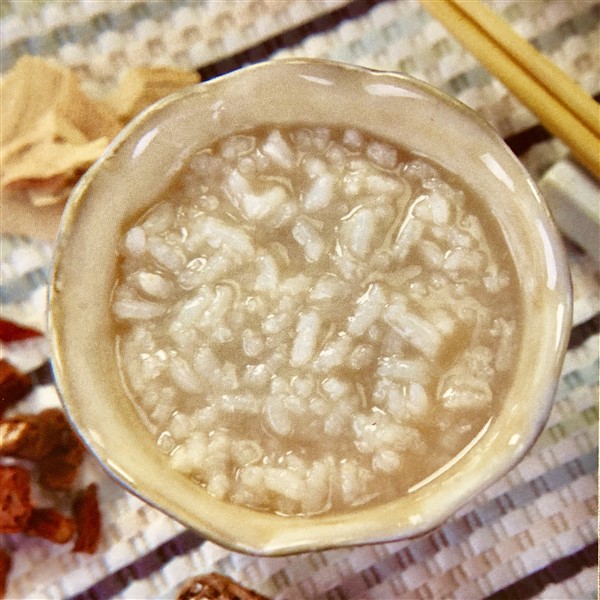Red Sage (Danshen) Congee
Identifying Quality Red Sage (Danshen)
Red sage is called such for the purplish-red hue of its stalk (it is also known as 'purple sage' in some areas). Since ancient times, red sage has been revered for its medicinal properties, and in later ages it has been used in gynecology. As a precious healing herb, Cantonese people often use it in decoctions and congee dishes.
The best red sage is dry, thick, and sturdy with a red hue.
Red Sage's Medicinal Properties
Red sage congee improves blood circulation, disperses stasis, cools and nourishes the blood, alleviates pain, and relieves uneasiness. It helps regulate menstrual cycles and reduces postpartum abdominal pain. The dish is also an effective auxiliary treatment for pain in the limbs, painful ulcers, swellings, insomnia, distress, chronic gastritis, duodenal and stomach ulcers, gastric neurosis, coronary heart disease, and angina pectoris.
Since red sage improves blood circulation, and because the quantities that need to be consumed are quite large, it is not suitable for those suffering from hemorrhagic pain or pregnant women.

Ingredients
- 0.52 ounce (15 grams) red sage
- 0.1 ounce (3 grams) Amomum villosum
- 0.21 ounce (6 grams) Indian sandalwood
- 1/4 cup (50 grams) rice
Seasonings
- sugar to taste
Cooking Directions
- Fry red sage, Amomum villosum, and Indian sandalwood to extract their juices. Sift away any chunks, leaving juice.
- Wash rice.
- Add ample water to clay pot and bring to rolling boil. Add rice and bring to rolling boil again over high heat. Then reduce heat to low and boil until a thick consistency is achieved.
- Add the herbal juice from step 1 and sugar. Boil briefly. Serve.